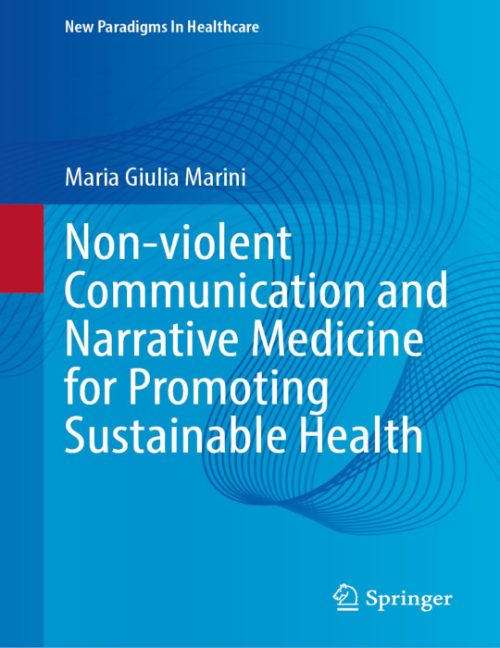Maria Giulia Marini is a colleague and a fellow traveller: in recent years we have shared experiences that have allowed us to unite our paths, which are sometimes different, through a common search for possible alternatives, for spaces of relationship and sharing in a reality that seems to be increasingly locked into self-referential thought mechanisms.
Her recently published book, Non Violent Communication and Narrative Medicine, is a courageous book. It is a courageous book because its very title addresses a crucial issue, the violence that has become exaggerated, excessive and pervasive in all spheres of existence today; but also because, in addressing it, it anticipates the possibility of overcoming it through the dimension of relationship, care and narrative.

Addressing the issue of violence in the world of healthcare, Maria Giulia reminds us at the outset, is extremely important today because it means “taking the bull by the horns” and asking why such a degree of physical and verbal violence has become rampant today in the very world of care and health, which from its earliest beginnings has always been inspired by its opposite, trust in the relationship between doctor and patient as an indispensable bond for healing from illness and overcoming trauma.
What has become of this relationship today? Why is it that today, when medicine has made great scientific and technological advances, the relationship between the healer and the heir seems to have reached an irreparable breaking point? Is it still possible to redress the balance?
The book analyses different potentially pathological situations, traces gender and age differences, compares different physical and mental conditions. Above all, however, it proposes possible narratives that can highlight hidden aspects and act as a bridge to a change of perspective. Aspects that I would like to highlight because they are somehow very close to me, because they are central aspects of the relationship with patients in my work as a psychoanalyst.
Firstly, the development of analogical thinking, inspired by narratives, stories from Shakespeare to recent scientific hypotheses, capable of bringing together apparently unrelated elements. A common element of such heterogeneous lines of research is the emergence of phenomena of ‘synchronicity’, which escape the violently oppositional binary logic that dominates today, and can therefore convey new ways of thinking, open up new possibilities.
For example, communicating with children through play can become a way of recognising the need for lightness in us adults, our desire to discover, to see things with new eyes.
Immersing ourselves in the enforced seclusion of the young ‘hikikomori’ can allow us to experience their disturbing sense of isolation, but also to discover the ability to stand alone with ourselves in the face of the most terrible shadows of chaos.
Understanding the fear of death of the elderly and their progressive detachment from the world puts us in touch with the ‘world of the threshold’ and reminds us of the all too human need for rituals to help us cross it, something we may have lost today.
New narratives, then, or old narratives to be rediscovered, that bridge new thoughts and allow us to inhabit new shared realities and rediscover the need to care for one another: this is the message of the book, and it is something we desperately need today.

